The White House
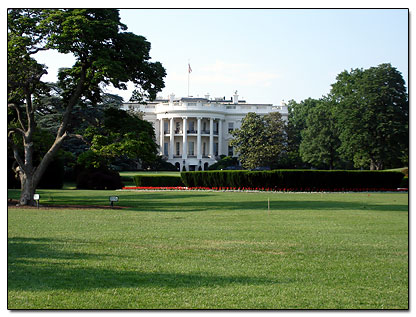
In honor of Presidents Day, observed this week, we will give you a rare tour of the inside of The White House. As the official home and work place of the President of The United States, the White House is perhaps the most historically rich and important edifice in this country.
The White house was built from 1792-1800, constructed from white aquia sandstone in neo-classical style. James Hoben, an Irish man, was the original architect and Benjamin Henry Latrobe expanded it during the Jefferson administration. In 2007 the White House was ranked second on the American Institute of Architects list of “America’s Favorite Architecture”.
Inside Tour
Residence State Floor (Floor 1):
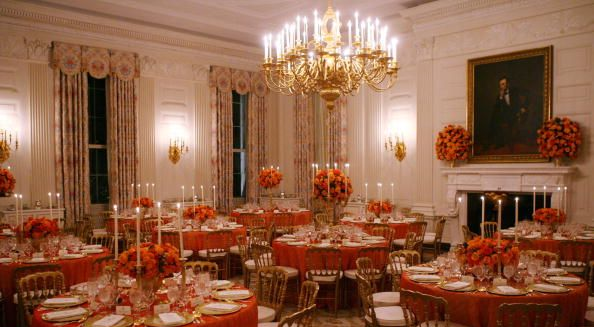
Originally the site of the office of Thomas Jefferson the State Dining Room was officially established by President James Madison in 1809. The room is used for receptions, luncheons, and larger formal dinners called state dinners for visiting heads of state on state visits.
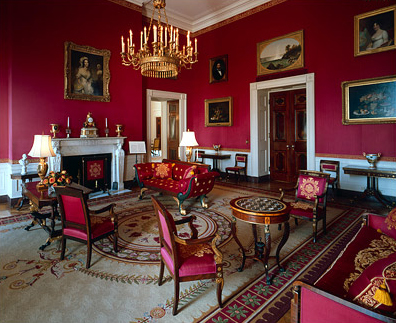
The Red Room received it’s name because of all the red materials used to decorate it in the 1840’s. Over the years it has mainly been used by the First Ladies to host guests and political company.
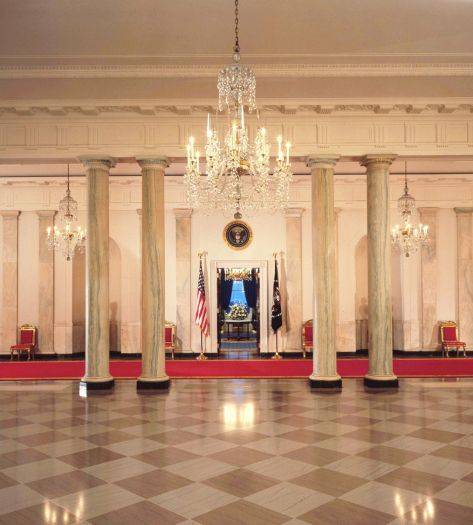
The North Portico entrance is where The President and First Lady greet guest of the state before dinners. The north entrance faces Pennsylvania Avenue, the official address of the White House, so it is often referred to as the front entrance.
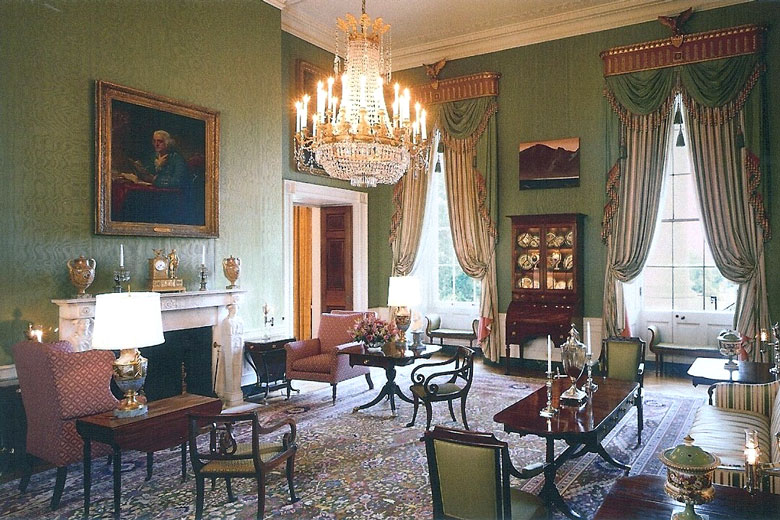
The Green Room, decorated in Colonial revival, is one of the three state parlors used for small teas and receptions. It is also where guests are served cocktails before state dinners. The green room is known as the favorite White House parlor.
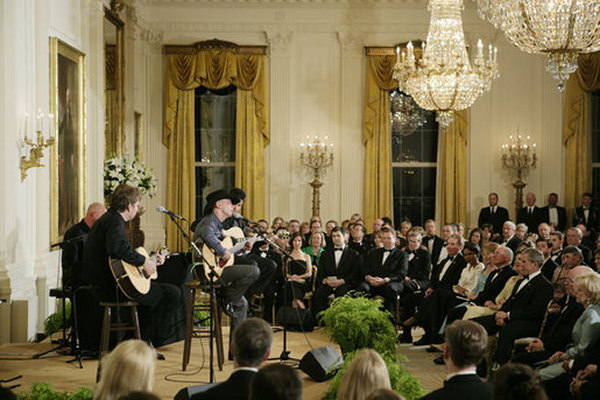
The East Room has served many function over the years. Some of them being a public audience room, a place for First Lady Abigail Adams to hang out her laundry,sleeping quarters for Thomas Jefferson’s aide Meriwether Lewis, and the site of President Lincoln’s funeral. During the current Obama administration it has been used for the signing of the Affordable Care Act as well as a musical performance celebrating the arts.
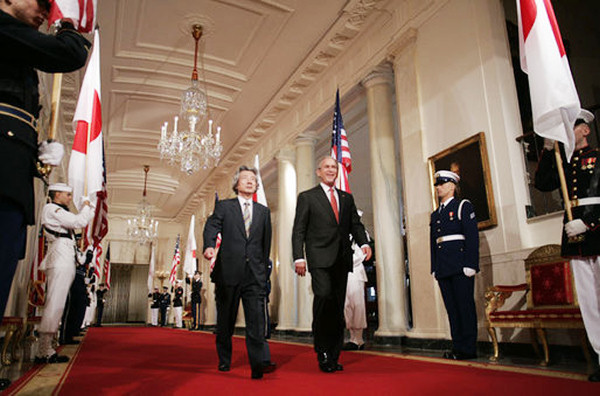
The Entrance Hall and Cross Hall were at the center of architect James Hoban’s plan for the White House. It serves as the official entrance hall to the White House. In 1841 crowds passed through the Cross Hall to view the body of President William Henry Harrison. The presidential portraits hang in the Cross Hall.
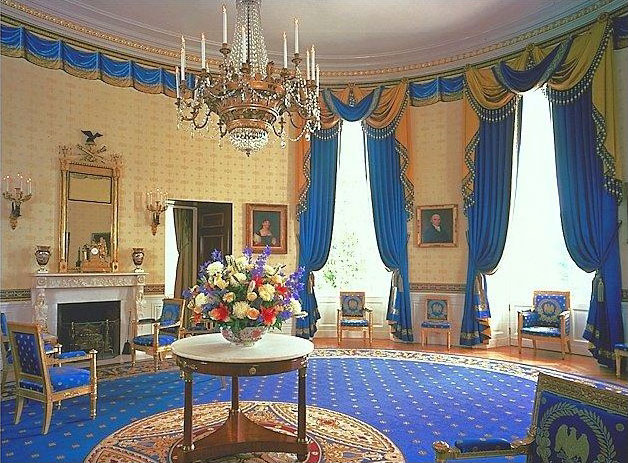
From entertaining kings to shaking hands with the masses, the business of democracy and the social graces of diplomacy have taken place in the Blue Room. The room, a perfect oval with breathtaking views of the south lawn, has awed many visitors over the years. The room has been redecorated many times but the tradition of keeping it blue has been observed since it was started by President Martin Van Buren in 1837.
Residence Ground (Floor 2):
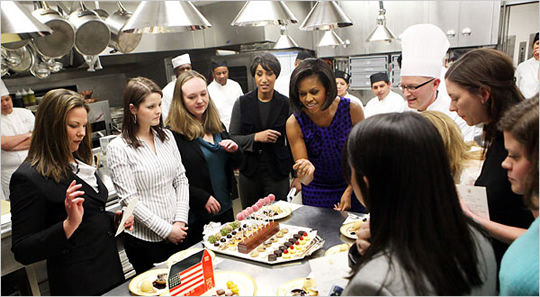
The Kitchen is where all food served in the White House is prepared, from family dinners to state dinners. The kitchen has 5 full time cooks and is capable of cooking dinner for 140 and appetizers for 1,000.
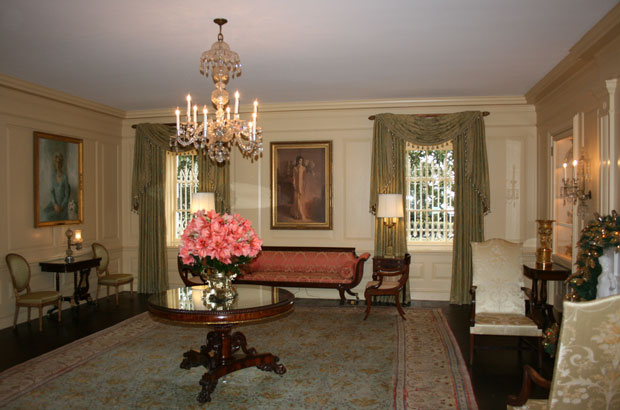
Portraits of the five 20th century first ladies hang in the Vermeil Room. The room received its name from the collection of Vermiel (French-gilded silver) displayed there that was presented to the White House in 1957. The Vermeil Room is often used as a ladies sitting room.
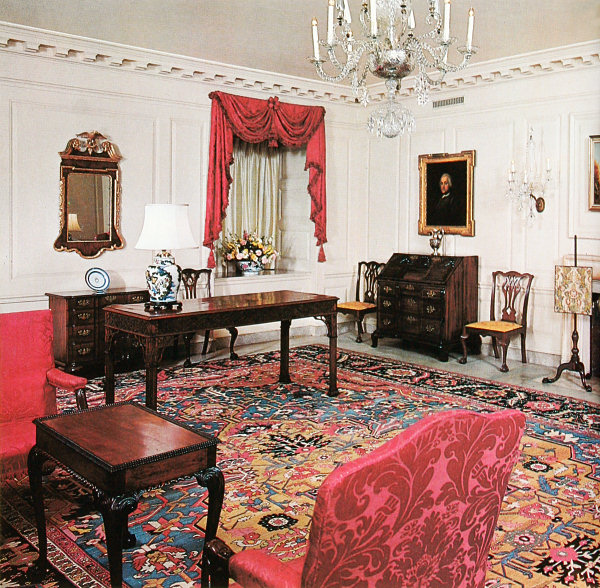
The Map Room received it name during WWII when President Roosevelt used it as a situation room where maps were consulted to track the war. The room contains the last situation map Roosevelt prepared, as well as early maps of Washington, DC and a case of world maps presented by the National Geographic Society. The room is traditionally used meeting room for the President and First Lady. Today it serves multiple purposes, most recently for a meeting between President Obama and The Dalai Lama and for a classical music workshop with renowned musicians and local music.
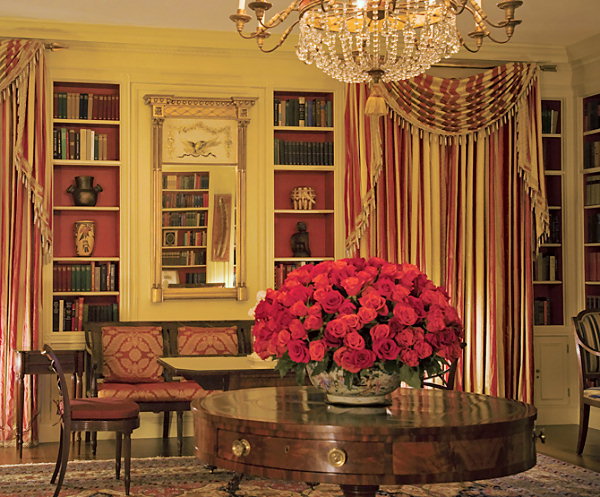
The room was originally a laundry room, then a waiting room, and in 1935 became the White House Library. Furnished in the style of the late Federal period the library is less formal than the rooms of the State Floor and is often used for teas and meetings.
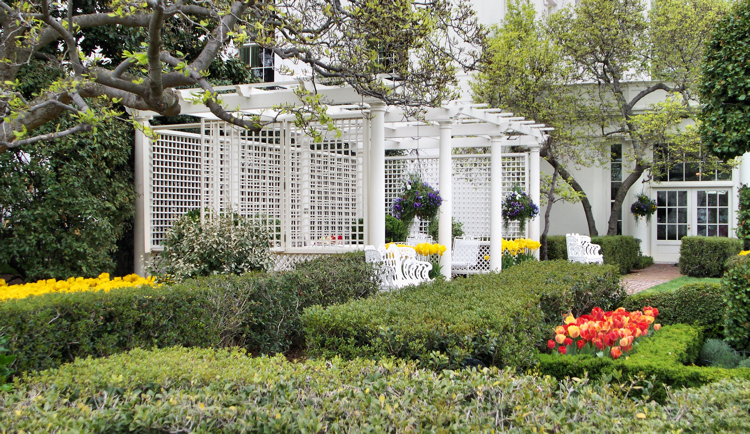
First Lady Jacqueline Kennedy worked together with garden designers Rachel Lambert Mellon and Perry Wheeler to reconstruct the rose garden and east garden which were in great decline when her husband took office. First Lady Bird Johnson renamed the East Garden the Jacqueline Kennedy Garden as tribute to Jacqueline’s contributions to the White House and its grounds.
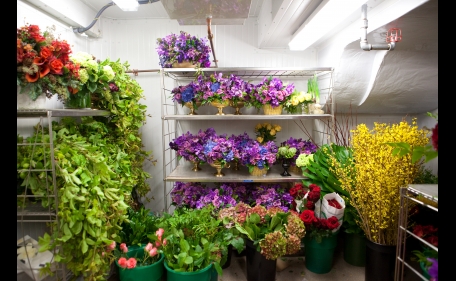
The flower shop is where all floral arrangements gracing the white house, from galas to tabletop bouquets, are prepared.
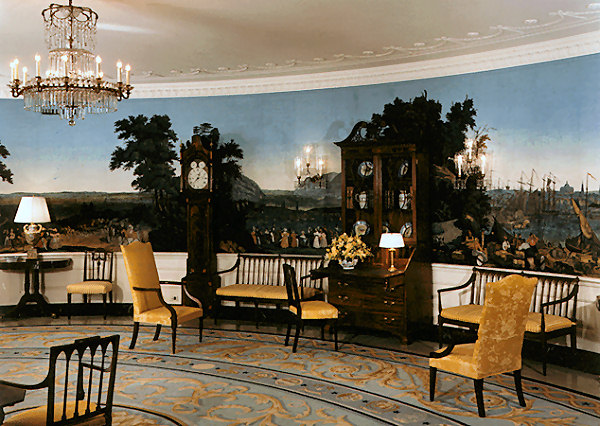
During the Great Depression in the 1930s and through World War II, President Franklin D. Roosevelt delivered his famous Fireside Chats radio addresses to the American people from this room. The rug that takes up most of the room was woven specially and border incorporates emblems of the 50 states. In 1962 First Lady Jacqueline Kennedy added the wallpaper of scenic American landscapes to the room. The paper is called “Views of North America” and was first printed in 1834 by Jean Zuber et Cie in Rixheim, Alsace. Occasionally President Obama uses the Diplomatic Room for his weekly video addresses. The room is also used now as a meeting place for guests before large events and as the principal entry for the First Family.
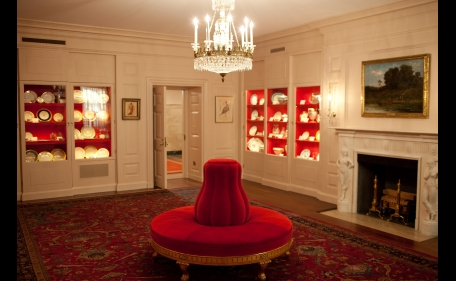
The China Room is a historical display set up by First Lady Caroline Harrison to exhibit the china used by the First Ladies of the White House. The red theme was chosen to match the color of the red dress Lady Grace Coolidge wore in her portrait with her dog Rob Roy.
West Wing:
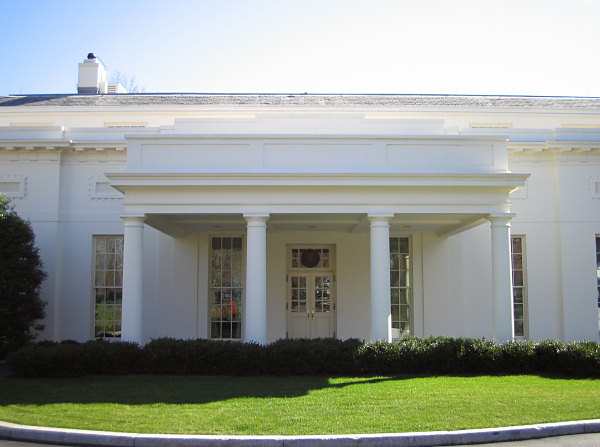
The West Wing is a building in the presidential complex which houses the Oval Office, Cabinet Room, The Situation Room and The Roosevelt Room. A U.S. Marine is always outside the entrance while the President is at work.
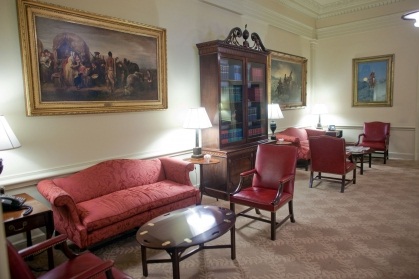
Visitors who come to the President or Vice President use the Reception Room while waiting here for their appointment.
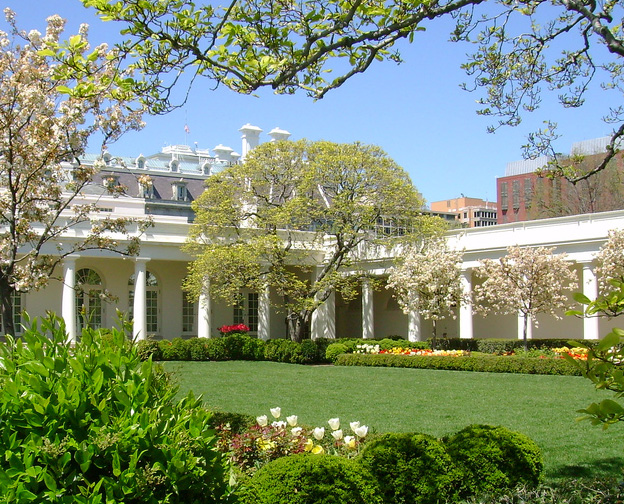
The Rose Garden, bordering the West Wing, was designed in 1913 by First Lady Ellen Axson Wilson. It was redesigned as a reception area during the Kennedy administration. Weather permitting it serves as an outdoor place for the President’s bill signings, press conferences and diplomatic receptions.
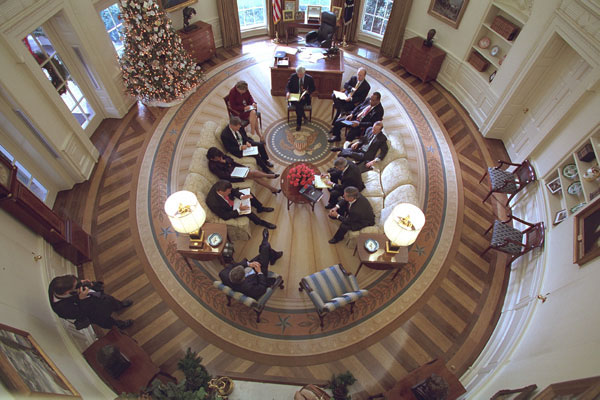
The Oval Office, perhaps the most famous room in the White House, is the presidents primary place of work. Every president redecorates the office to suit his taste. Formal presidential speeches are only given from the Oval Office on rare, grave occasions, such as when President Bush addressed the Nation on September 11th.
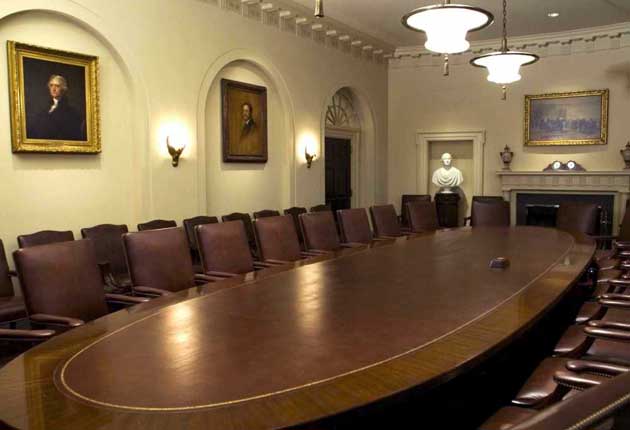
The Cabinet Room is the meeting room for the Cabinet Secretaries and Advisers. The large elliptical mahogany table in the center of the room was gifted to the White House by President Richard Nixon in 1970. The president and the cabinet secretaries’ chairs are imitations of a late-eighteenth century design. The president’s chair is centered on the table and the back of it is two inches taller than the cabinet secretaries. Engraved brass plates with the names of the cabinet positions are attached to the back of the chairs. The president’s simply says “THE PRESIDENT.”
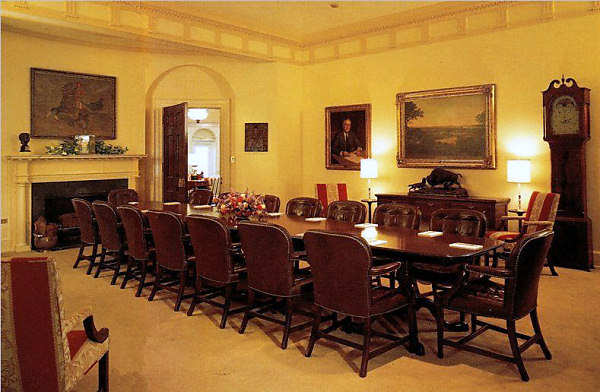
The Roosevelt Room is situated where Presidents Theodore Roosevelt’s office used to be. President Richard Nixon named it to honor President Theodore Roosevelt for building the room and President Franklin D. Roosevelt for expanding it. Portraits of both to Roosevelt’s hang in the room. The Roosevelt Room is used for staff meetings, and is commonly used to announce the nomination of new staff members. The room is also used as a preparation room by large delegations meeting with the president before entering the Oval Office.
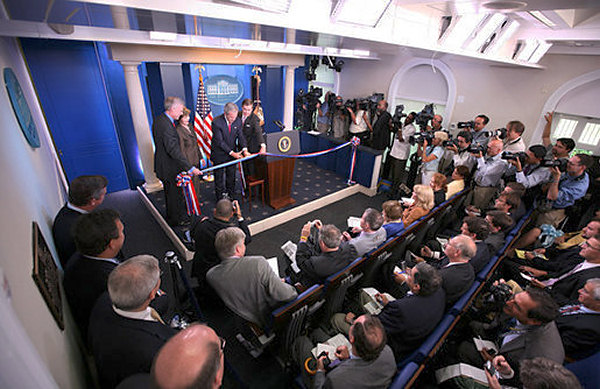
The Briefing Room is used in press conferences for the White House Press Corps. The White House Press Secretary provides daily briefings from here to the news media and the President occasionally addresses the Nation here. The Room was renamed in 2000 the James S. Brady Briefing Room in honor of the Press Secretary who was permanently disabled during the assassination attempt on President Reagan.
West Wing Ground:
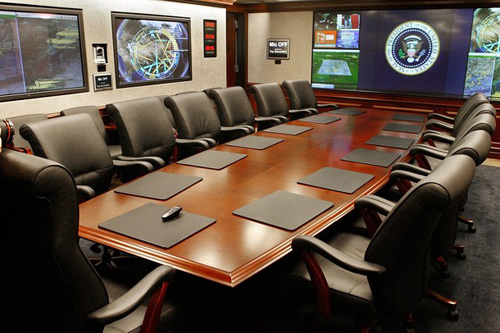
The Situation Room is where intelligence communication is fed directly to the White House. The complex of rooms is staffed 24 hours a day to monitor national and international intelligence. The room was established in 1961, by demands of JFK, after he was unable to receive real time information during the Bay of Pigs Invasion. The president also uses this room to communicate securely with American military commanders and foreign heads of state world-wide.
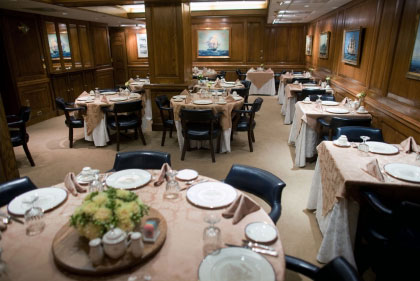
Although the President has a private dining room the navy runs a restaurant in the West Wing. The Navy Mess, as it is called in typical navy slang, began in 1880 after President Rutherford B. Hayes traveled aboard the Presidential Yacht, Despatch and noted that the food the Navy cooked was significantly better than the food at the White House. Since then the Navy has been sending its top chefs to provide food in the White House.
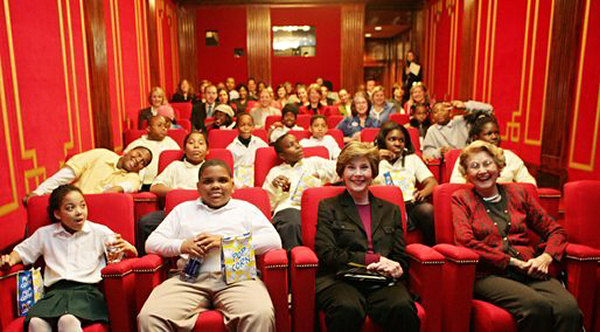
The Family Theater has 42 seats in tiered rows. In this room the first family and friends enjoy watching movies, shows and TV. FDR had the room built to watch news reels and battles fought in foreign countries.
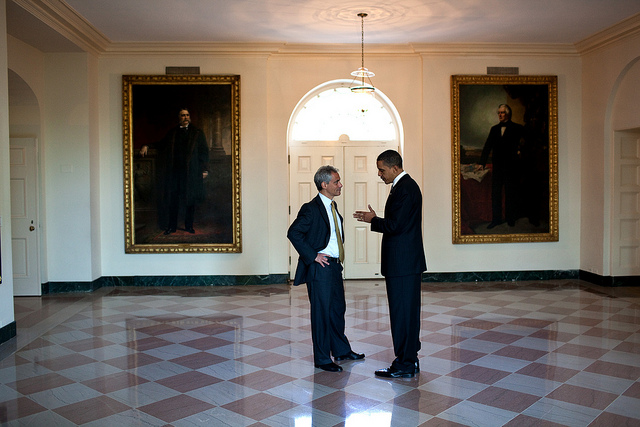
The Garden Room displays various items of historical value and interest to be viewed by guests on the White House tour.
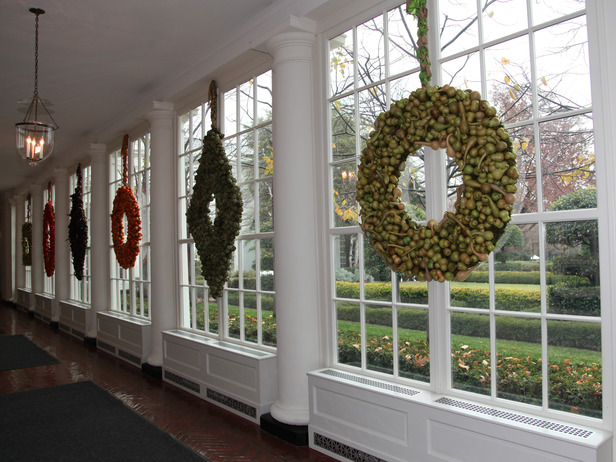
The glassed enclosed east Colonnade connects the East Wing and the family Residence. It was originally built by President Teddy Roosevelt and later reconstructed by FDR.
South Lawn:
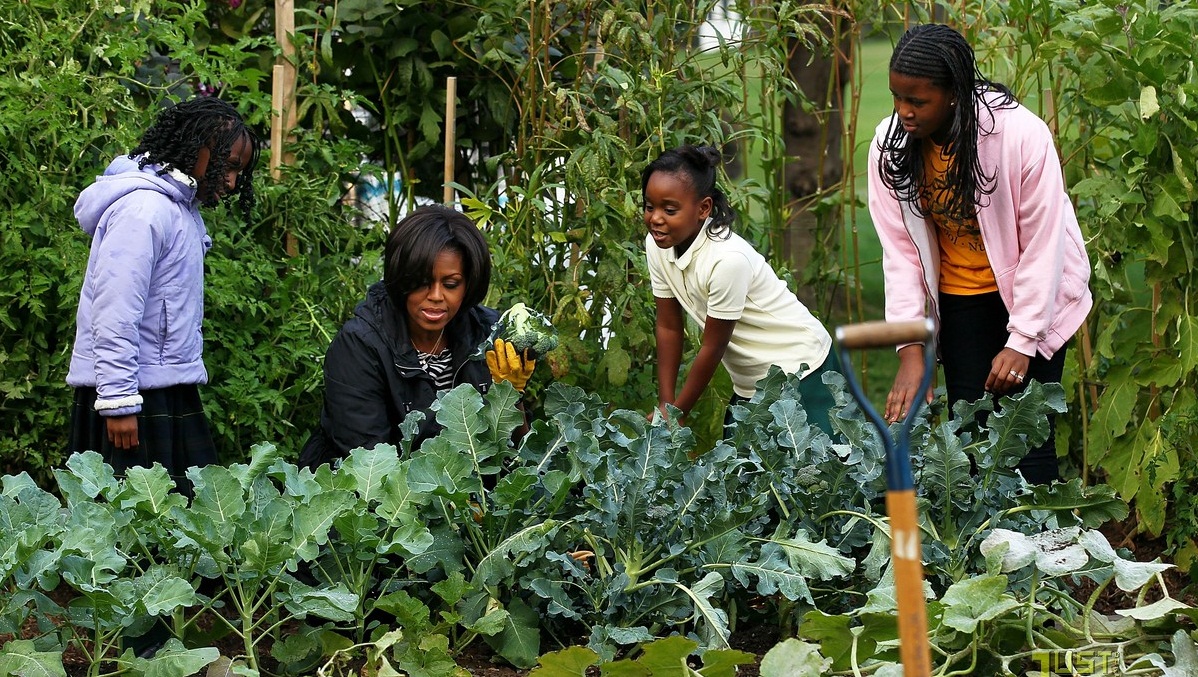
The kitchen Garden was planted by First Lady Michelle Obama, with the help of local elementary school students, as part of her health campaign. The garden inspired her “Lets Move” project- a fight against childhood obesity. The garden provides fresh produce for the first family and is sometimes used for official dinners as well.
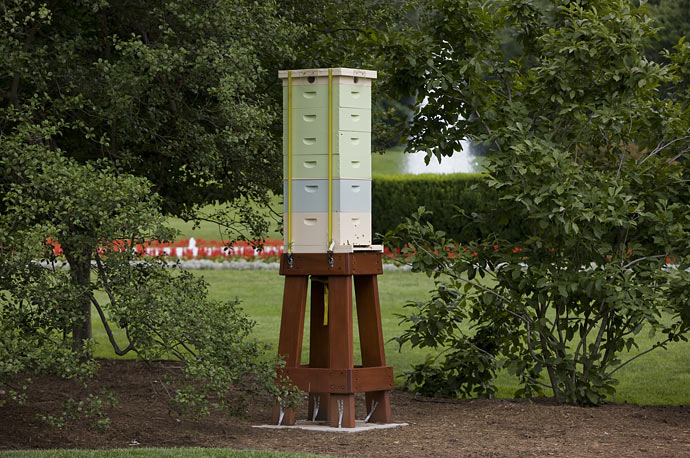
A two-decade White House carpenter, Charlie Brant, began bee keeping as a hobby. The Obama Administration embraced the idea and the honey is used in the White House kitchen and the bees help pollinate the Kitchen Garden.
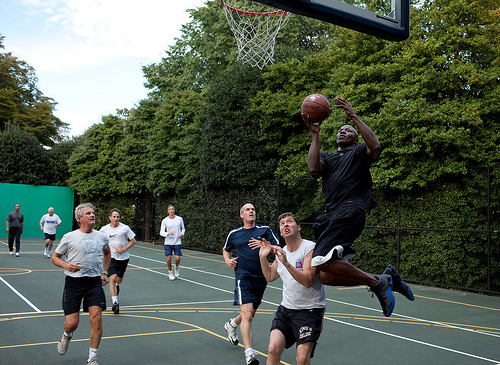
President Obama’s love for basketball is well known. He had the White House tennis court adapted so it can be used for a full court basketball game also.
That is the full tour of the White House with a little bit of history. Do you know any more interesting facts about the White House? Send it in HERE– we would love to hear it!

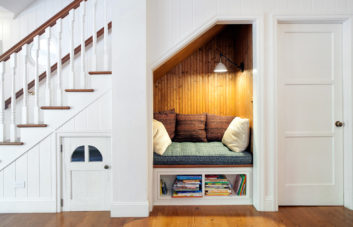
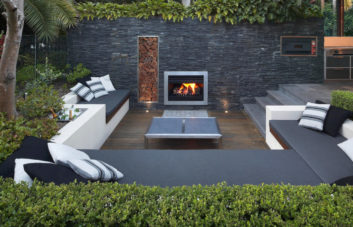
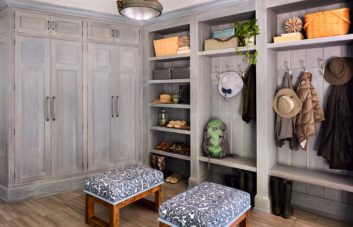
WWWWOOOWWWWW!!!
Man its awesome!
Wow that last pic really sums up basketball.
why so many rooms?